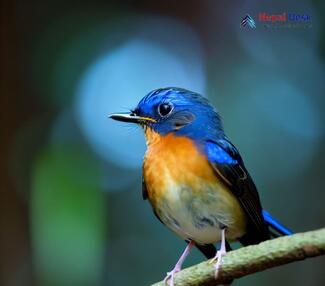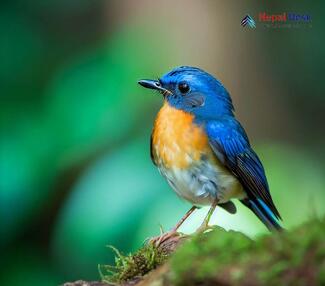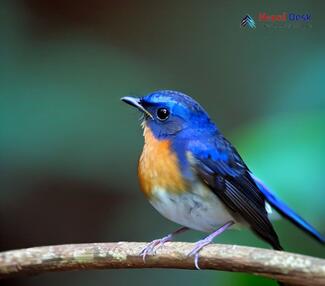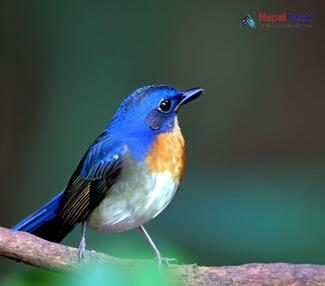The Hill Blue Flycatcher is a stunning and enigmatic bird species native to the forests of Asia, particularly inhabiting countries like Nepal. This beautiful creature piques the interest of bird enthusiasts, nature lovers, and researchers alike. In this article, we delve into the captivating world of the Hill Blue Flycatcher by exploring its taxonomy, physical features, habitat, diet, and presence in Nepal.
Taxonomy of the Hill Blue Flycatcher
Scientifically classified under the family Muscicapidae and genus Cyornis, the Hill Blue Flycatcher is commonly referred to as Cyornis Banyumas. This species is closely related to other flycatchers within the same genus, sharing similarities in morphology and behavior.
Physical Features: A Vibrant Bird Species
Male Hill Blue Flycatchers exhibit striking colors that are hard to miss. They sport a vibrant blue upper body with patches of black on their face, while their underparts boast a mix of white and orange hues. Female counterparts, however, are markedly different in appearance with dull shades of brown dominating their plumage—a classic example of sexual dimorphism among avian species.
Habitat: Home Amongst Trees
The preferred habitat of the Hill Blue Flycatcher encompasses tropical and subtropical forests from lowlands up to an elevation of 3,900 feet. The dense foliage provides these birds with ample cover during nesting season and makes for ideal perches as they hunt for insects. Their affinity for trees keeps them well-adapted to live within lush forested landscapes.
Diet: Insectivorous Tendencies
As their name suggests, flycatchers—including the Hill Blue Flycatcher—primarily feed on insects. They pick off flying insects directly from the air or snatch them from tree branches using their agile beaks. These birds have been observed consuming a wide range of insects like flies, beetles, ants, and caterpillars. This diet helps regulate insect populations within their respective habitats.
Presence in Nepal: A Sight to Behold
While the Hill Blue Flycatcher is native to various countries throughout Asia, its presence in Nepal is particularly noteworthy. Birders and researchers can spot this captivating bird within the lowland tropical forests distributed across the country's southern Terai region. The rich biodiversity found in Nepal makes it one of the best places to indulge in birdwatching and explore other fascinating wildlife.
Fun Fact: Masters of Mimicry
One lesser-known fact about the Hill Blue Flycatcher is its remarkable capability to mimic the songs and calls of fellow bird species. This intriguing behavior serves various purposes such as defending territories or securing a mate during breeding season.
In conclusion, the Hill Blue Flycatcher is an alluring bird species with unique characteristic features. Its enchanting plumage, preference for dense forests, insectivorous appetite, budding presence in Nepal, and mastery in mimicry make it a marvel of the avian world. As we continue to uncover more intricacies about this fascinating species, one thing remains certain—the Hill Blue Flycatcher will always capture our imagination and admiration.




